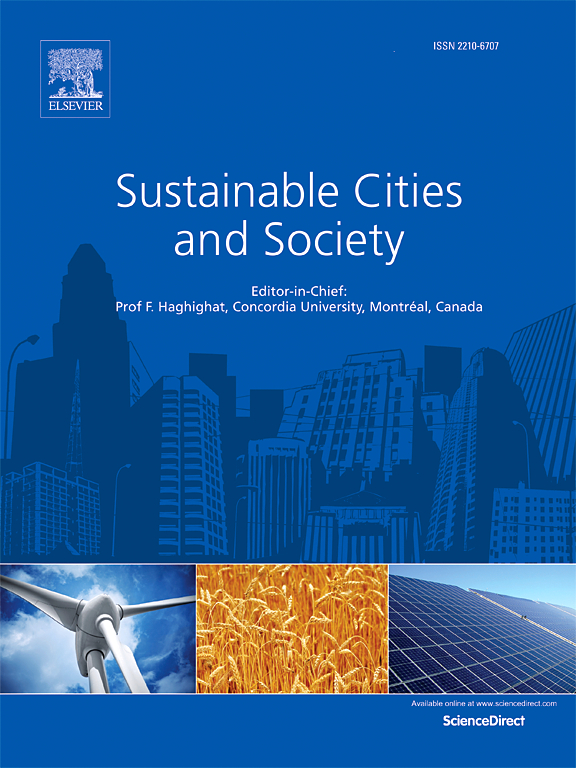Association between urban agglomerations and total non-exhaust particulate matter emissions from electric vehicles: A case study from urban and non-urban cities in Taiwan
IF 10.5
1区 工程技术
Q1 CONSTRUCTION & BUILDING TECHNOLOGY
引用次数: 0
Abstract
Many countries are adopting vehicle electrification policies to achieve net-zero goals and sustainable transport sector. However, varying levels of urban development and socio-economic conditions can influence the transition and its environmental impact. This study explored the interplay between urban agglomerations and non-exhaust particulate matters (NE PMs) emission from electric vehicles (EVs) by identifying urban and non-urban cluster, agglomeration index, spatial variation, and EVs emission share of 22 cities in Taiwan. Three urban agglomeration clusters were identified in the northern, central, and southern areas with Taipei, Chiayi city, and Tainan as the center cities of each cluster. High spatial resolution analysis for NE PMs has revealed intensified emissions from EVs in the urban agglomeration clusters, with center cities having higher emissions compared to other cities. Urban cities such as Taipei and Tainan have 6 – 14 times higher emissions from EVs (2.97 – 3.44 tTSP/y) than non-urban cities (0.30 – 0.33 tTSP/y). Multi-linear regression (MLR) and principal component analysis (PCA) fitting models revealed that socio-economic indicators such as adult population, immigrant numbers, road area, and regular income are significantly associated with NE PM emissions from EVs (p < 0.01). These findings provide further insights into the importance of targeted net-zero policies in city-level perspective.

求助全文
约1分钟内获得全文
求助全文
来源期刊

Sustainable Cities and Society
Social Sciences-Geography, Planning and Development
CiteScore
22.00
自引率
13.70%
发文量
810
审稿时长
27 days
期刊介绍:
Sustainable Cities and Society (SCS) is an international journal that focuses on fundamental and applied research to promote environmentally sustainable and socially resilient cities. The journal welcomes cross-cutting, multi-disciplinary research in various areas, including:
1. Smart cities and resilient environments;
2. Alternative/clean energy sources, energy distribution, distributed energy generation, and energy demand reduction/management;
3. Monitoring and improving air quality in built environment and cities (e.g., healthy built environment and air quality management);
4. Energy efficient, low/zero carbon, and green buildings/communities;
5. Climate change mitigation and adaptation in urban environments;
6. Green infrastructure and BMPs;
7. Environmental Footprint accounting and management;
8. Urban agriculture and forestry;
9. ICT, smart grid and intelligent infrastructure;
10. Urban design/planning, regulations, legislation, certification, economics, and policy;
11. Social aspects, impacts and resiliency of cities;
12. Behavior monitoring, analysis and change within urban communities;
13. Health monitoring and improvement;
14. Nexus issues related to sustainable cities and societies;
15. Smart city governance;
16. Decision Support Systems for trade-off and uncertainty analysis for improved management of cities and society;
17. Big data, machine learning, and artificial intelligence applications and case studies;
18. Critical infrastructure protection, including security, privacy, forensics, and reliability issues of cyber-physical systems.
19. Water footprint reduction and urban water distribution, harvesting, treatment, reuse and management;
20. Waste reduction and recycling;
21. Wastewater collection, treatment and recycling;
22. Smart, clean and healthy transportation systems and infrastructure;
 求助内容:
求助内容: 应助结果提醒方式:
应助结果提醒方式:


